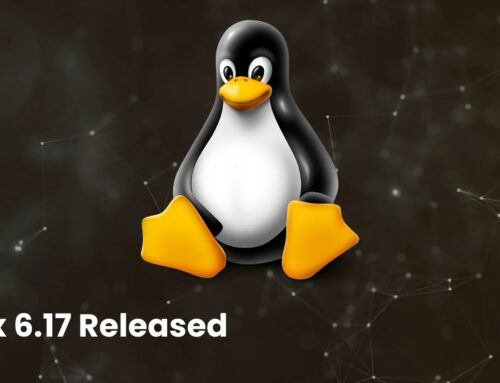
Beer Brewing Giant Asahi Halts Production Following Cyberattack
Asahi Group Holdings Grinds to a Halt: A Deep Dive into the Cyberattack Paralyzing a Brewing Giant
The global supply chain, already a delicate balance, faces yet another disruption. This time, it’s the unexpected silence in the brewing vats of Asahi Group Holdings, a Japanese beverage conglomerate. A significant cyberattack on Monday crippled the company’s systems, forcing an immediate halt to production at its domestic factories. As of Tuesday, operations remain suspended with no clear timeline for resumption, impacting the production of iconic beverages. This incident serves as a stark reminder of the pervasive and devastating impact cyber threats can have on even the most established industries.
The Production Freeze: Unpacking the Immediate Impact
The severity of the cyberattack on Asahi cannot be overstated. A company spokesperson confirmed the production halt, indicating that critical systems necessary for manufacturing have been compromised. This isn’t merely a temporary IT glitch; it signifies a deep penetration into their operational technology (OT) and core business infrastructure. The complete suspension of production points towards a widespread system compromise, likely affecting various interconnected systems from inventory management to logistics.
The inability to provide a resumption timeline further emphasizes the complexity of the situation. Cyberattacks on industrial control systems (ICS) and OT environments, particularly those leading to production halts, often require extensive forensic analysis, system rebuilding, and meticulous security hardening before operations can safely resume. The financial repercussions for Asahi will undoubtedly be substantial, encompassing lost revenue, remediation costs, and potential reputational damage.
Understanding the Threat Landscape: Beyond Standard IT
While the specific nature of the attack on Asahi has not been disclosed, such incidents often fall into categories like ransomware, sophisticated data exfiltration, or targeted denial-of-service attacks against critical infrastructure. In the manufacturing sector, these attacks frequently target:
- SCADA/ICS Systems: Supervisory Control and Data Acquisition (SCADA) and Industrial Control Systems (ICS) are the backbone of modern factories. An attack here can directly manipulate or shut down physical processes.
- Enterprise Resource Planning (ERP) Systems: Systems handling inventory, production planning, and supply chain management are crucial. Compromise here can paralyze operations even if physical machinery is unaffected.
- Supply Chain Vulnerabilities: Attackers often exploit weaknesses in third-party vendors or partners to gain access to a larger organization’s network.
Identifying common vulnerabilities in industrial environments is key to prevention. While no specific CVE has been linked to the Asahi incident yet, general vulnerabilities like those associated with unpatched software (e.g., CVE-2023-38831 impacting Apache ActiveMQ) or unsecured remote access protocols (e.g., CVE-2023-46805 affecting Ivanti Connect Secure VPN) are frequently exploited by threat actors.
Remediation Actions for Manufacturing and Beverage Industries
For organizations in manufacturing, food and beverage, or any sector reliant on operational technology, proactive measures are paramount. When faced with or preparing for such threats, consider these critical remediation actions:
- Incident Response Plan Activation: Immediately activate a comprehensive incident response plan, including isolating affected systems, engaging forensic specialists, and notifying relevant stakeholders.
- Network Segmentation: Implement robust network segmentation to isolate OT networks from IT networks. This limits the lateral movement of attackers.
- Regular Backups: Maintain isolated, air-gapped backups of all critical data and system configurations, including OT system images, to facilitate rapid recovery.
- Patch Management: Establish and diligently follow a strict patch management program for all software, firmware, and operating systems across both IT and OT environments. This includes industrial control system components.
- Vulnerability Assessments & Penetration Testing: Conduct regular vulnerability assessments and penetration tests, specifically targeting both IT and OT infrastructure, to identify and address weaknesses proactively.
- Employee Training: Implement ongoing cybersecurity awareness training for all employees, emphasizing phishing detection, secure remote access practices, and incident reporting procedures.
- Multi-Factor Authentication (MFA): Enforce MFA across all systems, especially for remote access and administrative accounts, to significantly reduce the risk of unauthorized access.
- Endpoint Detection and Response (EDR)/Extended Detection and Response (XDR): Deploy EDR or XDR solutions across IT endpoints to detect and respond to malicious activity in real-time.
- Industrial Cybersecurity Solutions: Invest in specialized industrial cybersecurity solutions designed to monitor, protect, and manage the unique security challenges of OT environments.
Essential Tools for Industrial Cybersecurity Resilience
Building resilience against sophisticated cyberattacks in industrial settings requires a layered approach, leveraging specialized tools:
| Tool Name | Purpose | Link |
|---|---|---|
| Claroty Continuous Threat Detection (CTD) | Comprehensive visibility, threat detection, and vulnerability management for OT networks. | https://claroty.com/solutions/platform/continuous-threat-detection/ |
| Dragos Platform | Industrial cybersecurity platform for asset visibility, threat detection, and incident response across ICS environments. | https://www.dragos.com/platform/ |
| Tenable.ot | Asset discovery, vulnerability management, and threat detection for operational technology environments. | https://www.tenable.com/products/tenable-ot |
| SentinelOne Singularity Platform | AI-powered endpoint security (EDR/XDR) for IT and potentially integrated OT endpoints. | https://www.sentinelone.com/platform/ |
| Nessus Professional | Vulnerability scanner for identifying security weaknesses in IT and some OT systems. | https://www.tenable.com/products/nessus |
Key Takeaways: Fortifying Industrial Defenses
The cyberattack on Asahi Group Holdings underscores the urgent need for robust cybersecurity strategies that extend beyond traditional IT perimeters to encompass critical operational technology. No industry, regardless of its size or legacy, is immune to these evolving threats. Proactive security measures, continuous monitoring, and a well-rehearsed incident response plan are non-negotiable for maintaining operational continuity and safeguarding highly automated manufacturing processes. Organizations must view cybersecurity as an integral part of their industrial infrastructure, not merely an adjunct, to prevent production halts and protect their core business.





